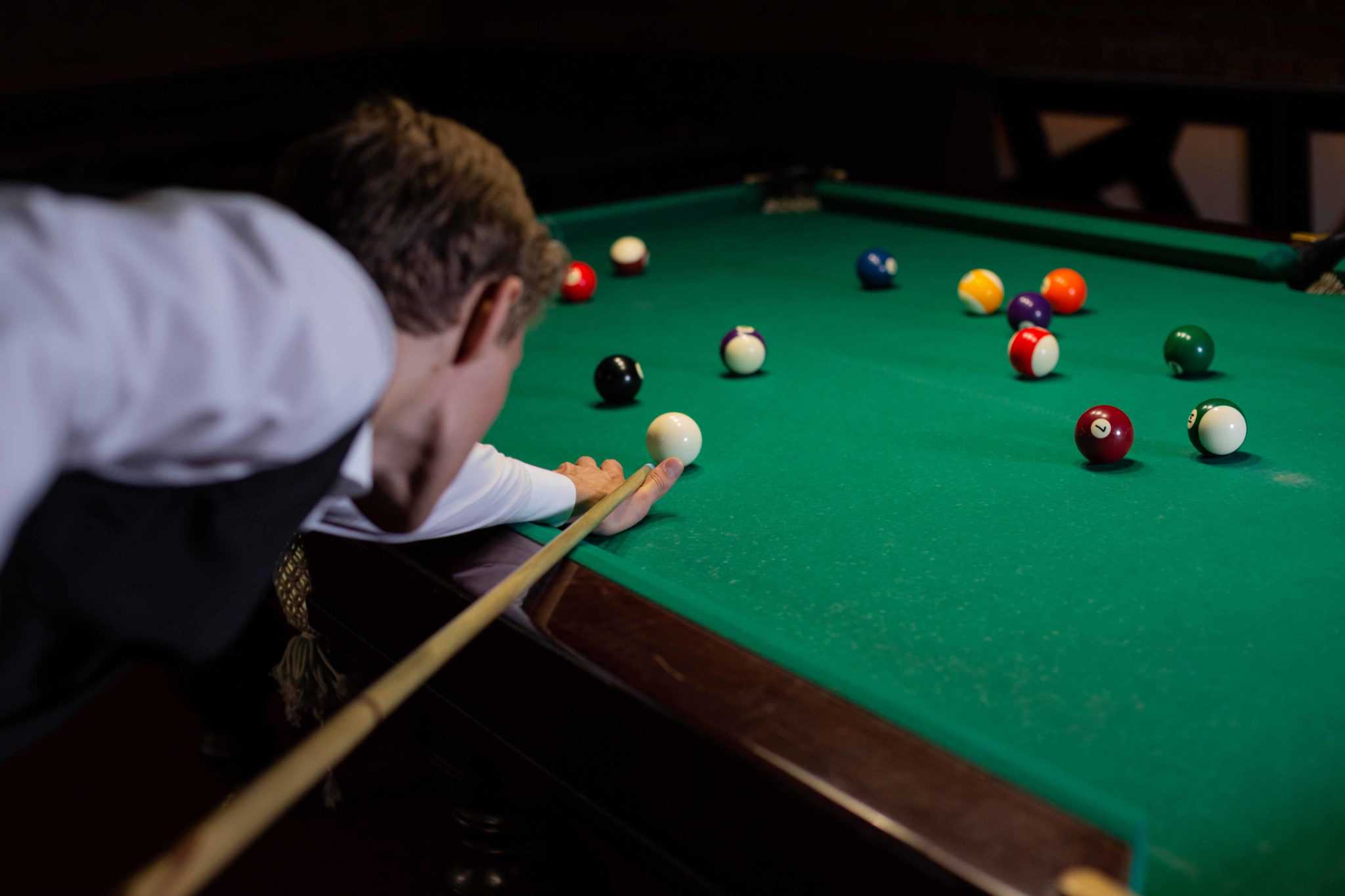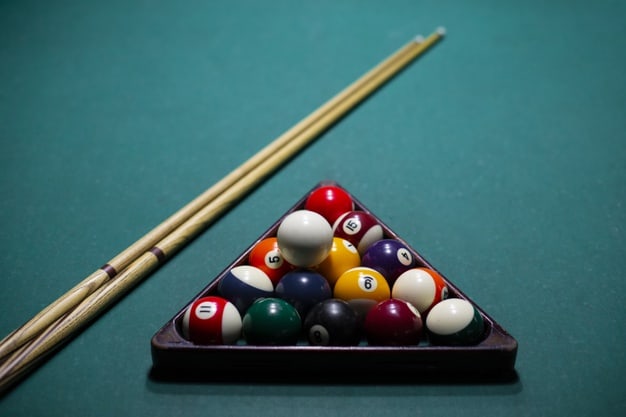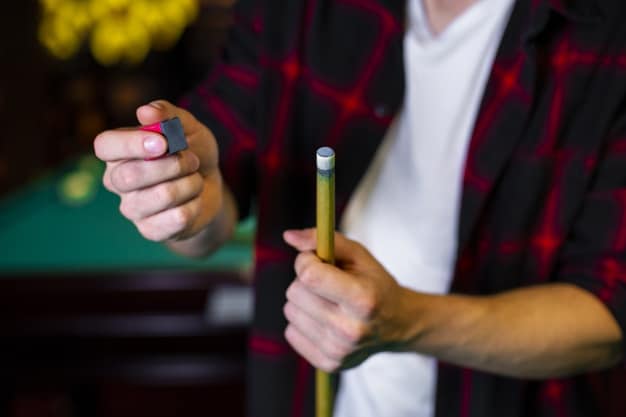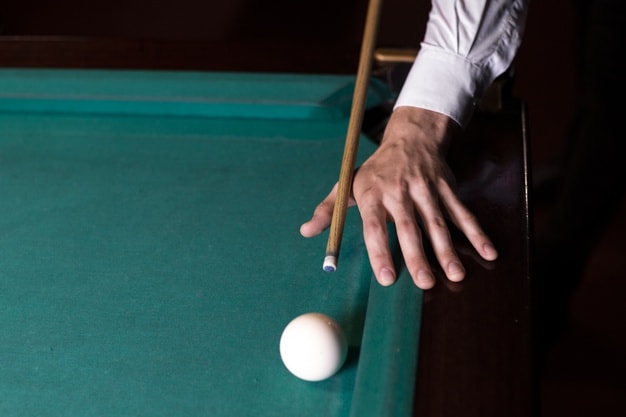
You could probably recognize a skilled player by their cue. On one hand, a pricey cue allows you to show off and makes you feel good. On the other, it lets others know who they are dealing with, which is more often than not to your disadvantage.
But what if your opponent wasn’t quite aware of your skill level? Well, they’d probably underestimate you, hopefully giving you an advantage during the first few strokes until your opponent realizes that you aren’t a newbie.
If this is the kind of advantage you are looking for, then a Sneaky Pete Pool Cue may be the right pool cue for you.
In this post, we’ll have a look at Sneaky Pete cues as cheap as roughly $100 and as expensive as $500 to hopefully meet the needs of more people. Aside from in-depth overviews, we’ll also talk a bit about the key features of pool cues to help you pick that best Sneaky Pete pool cue.
TL;DR – These are the Best Sneaky Pete Pool Cues 2022:
- Lucasi Custom Birds-Eye Maple – Best Overall
- Pure-X Sneaky Pete Pool Cue – Runner Up
- Predator Sneaky Pete – Best Splurge
- McDermott Star S1 – Best Basic
- Players S-PSPR Rosewood and Maple – Best Under $100
- Rage Heavy Hitter Break Cue – Affordable Sneaky Pete Break Cue2
For more skilled pool players, something like this low-deflection Sneaky Pete cue may be the right option. The key benefit of this cue is its low-deflection shaft that allows for more predictable and consistent shots.
A big contributor to the feel of this cue is the Tiger Everest tip. As Lucasi claims, this tip is durable like a hard tip, feels like a medium tip, and provides you with the control (including spin control) of a soft tip.
Among other contributors to the consistent feel of the Lucasi Sneaky Pete cue are the solid-core shaft and a lightweight polymer ferrule. Called Zero Flexpoint, this ferrule is promised to deliver a solid hit while ensuring low deflection.
What’s also notable about the Lucasi Birds-Eye Sneaky Pete pool cue is its Uni-Loc joints. These joints are here to ensure that the 2-piece construction doesn’t negatively impact the accuracy and alignment of the cue.
The finish is great and smooth. You can expect that this cue is pretty durable as well.
Pros
- Very low shaft deflection
- Pretty accurate
- Has a solid build quality
Cons
- Fairly pricey but worth the price.
The Pure-X Sneaky Pete cue seems not to have as fancy features as the Lucasi cue, but it’s slightly cheaper and thus more pocket-friendly. This cue is great for beginners and intermediate pool or billiards players.
This cue has a low deflection, but it appears to be not as consistent as in the Lucasi cue. To achieve better feel and consistency, this cue employs a soft tip along with a lightweight polymer core. Aside from that, this thing again has a low-deflection shaft.
However, the Pure-X pool cue probably won’t deliver as well-rounded performance as the Lucasi cue. The Lucasi cue has fancier features for that. But for the money, expect this Sneaky Pete cue to be a good buy. Also, it plays the same as some higher end Meucci cues without the that hefty price tag.
Pros
- Affordable low deflection cue
- Performance is somewhat closer to other higher end pool cues
- Good all-around performance
- Not as stable as the Lucasi Sneaky Pete
You might be wondering why I placed this amazing pool cue lower on this list. That is because, not all people want to spend that much money on a Sneaky Pete cue. The SP4NWR cue by Predator Cues is yet another high-end Sneaky Pete cue on our list. And it’s a pretty interesting model.
This cue is a part of Predator’s Roadline series that highlights a Vidvid Rengas and Natural Maple, a Four Point True-Splice Construction and the amazing 314-3 or Z3 low deflection shaft. This shaft has a consistent structure with a lighter front end, which allows for reduced deflection and more predictable hits.
Another notable feature is the Uni-Loc Weight Cartridge System. This system allows you to adjust the cue weight with 8 weights ranging from 0.1 to 2 ounces, perhaps allowing for a more tailored performance for your play style.
Pros
- Very low-deflection shaft
- Adjustable weight thanks to the Uni-Loc Weight Cartridge System
- High-quality construction
Cons
- It is a high-end model so expect that it has a higher price point
The McDermott’s Star S1 Sneaky Pete pool cue is very similar to other entry-level pool cues on our list.
The tip here is a hard leather tip, so expect it to have good longevity, as well as deliver less ball spin along with a better feel.
Deflection-wise, this cue isn’t too remarkable – it’s definitely not a low-deflection stick, so you’ll have to make more adjustments to your cue position to make a good shot.
For extra sneakiness, this thing has a wood-to-wood joint that makes it seem like a cheap one-piece cue. But one thing that may give this pool cue away is the stainless steel butt – many cheaper cues don’t have these. However, this is a minor detail that is likely to remain unnoticed by your opponents.
Pros
- Great starter cue
- Sneaky wood-to-wood joint
- Intermediate to advanced players may notice that it lacks a solid hit
The Players S-PSPR Sneaky Pete pool cue is around the same price point as the Rage Heavy Hitter cue, but it’s a more traditional cue. Most importantly, this cue has lighter by 4 to 7 ounces which should be suitable for most people.
Like the Rage Heavy Hitter pool cue, the Players S-PSPR cue has a wood-to-wood joint, which will make it look like a one-piece cue. The Players S-PSPR pool cue is another great option for beginner to intermediate players that are looking for an affordable cue.
This is a basic cue but expect this pool cue can also be used to control the cue ball effectively. Although this cue again won’t be phenomenal in this area, its lighter weight should allow for more consistent balls.
What you may also like about this cue is its hard tip that will deliver durability and better feel of the ball. The tip won’t dampen the strike too much, which may allow you to make better shots.
Pros
- Decent cue ball control
- Good all-around performance
- Not as durable as other pool cues on this list
An entry-level break cue the Rage Heavy Hitter pool cue certainly won’t boast the consistency and softness of the previous 2 cues. However, it should be a good choice for beginners and intermediate players, and it also has a few interesting things to offer.
Most importantly, this cue weighs 25 ounces. In contrast, the average cue usually weighs from 17 to 21 ounces. The heavy weight of the Rage Heavy Hitter Sneaky Pete cue is where the name “Heavy Hitter” comes from. This is a great break cue without paying a huge amount of money. Additionally, it can also be used as your main cue if you are familiar with heavier cues.
Will the increased weight be an advantage for you? Only you can tell – if you’ve tried lighter cues and didn’t like their feel, then this pool cue could be a good option.
The tip here is remarkable as well – it’s a hard-ish leather tip that should deliver durability and better ball feel.
What’s also notable about this pool cue is the wood-to-wood joint collar. The wood-to-wood joint may make this cue seem like a cheap one-piece cue, which is what you want from a Sneaky Pete pool cue.
With all that said, keep in mind that the Rage Heavy Hitter will probably have relatively higher deflection than the Lucasi and Pure-X cues above.
Pros
- A solid break cue that doesn’t break the bank
Cons
- It might be heavy for some players
Things To Look For In A Sneaky Pete Pool Cue

So as you know, the purpose of Sneaky Pete cues is to make your opponents underestimate you and your skill. This definition is pretty simple – however, how do you pick a cue that won’t give away its advanced performance features?
Well, to help you pick the right cue, let’s have a look at the key features to look for in a Sneaky Pete cue.
Design
The most important feature of a Sneaky Pete cue is design.
A high-quality Sneaky Pete cue will look like a cheap one-piece house cue. Among the things that make a pricey cue look like a low-level cue are:
- Wood-to-wood joint. This joint makes pricey 2-piece cues look like low-level single-piece house cues.
- Absence of a wrap. Although wraps are a matter of preference, pricey cues usually come with wraps.
- Wood-grain finish. This isn’t a rule, but pricey cues usually come in well-finished and colorful designs, while Sneaky Pete cues have a wood-grain finish that makes it seem that the cue has been cheaply manufactured.
All in all, the less fancy your pool cue looks, the better. To get a good idea of what a cheap cue should look like, we suggest that you look up non-Sneaky Pete cheap cues.
Shaft diameter
When talking about shaft diameter, we usually specifically imply the tip of the cue.
Pool cues tips usually have a diameter between 11-14mm. How thick the cue tip should be will depend on your preferences.
As a general rule, a thinner shaft provides finer-grained control over the tip’s positioning against the ball. With a thin tip, it might be easier to perform hard pool shuts like the English. On the other hand, a thicker tip provides you with less control, but it also makes the shot a little more predictable.
If you aren’t quite sure, then go for a 12-13mm cue – this diameter range seems to work for most people.

Deflection
When it comes to cue performance, deflection is perhaps the most important feature to look for in a Sneaky Pete (and any other) pool cue.
Deflection is the displacement of the ball from the intended trajectory. A pool cue with high deflection will displace the ball more and will thus be less consistent and predictable.
Result-oriented buyers should look for a pool cue with a low-deflection shaft. Among the things that make a cue shaft low-deflection are:
- Less weight at the end of the shaft. Low-deflection cues have thinner and lighter shafts because heavy shafts have higher deflection. Weight reduction may be achieved via hollowing out the wood shaft or replacing the wood with another, lighter material (like carbon fiber).
- Higher flexibility. Low-deflection shafts are flexible, which allows for reduced vibration when you hit the ball.
- Shafts with a consistent structure. Pool cue shafts made of solid wood aren’t consistent because the density of wood varies. To combat this inconsistency, manufacturers replace some of the wood with artificial materials like carbon fiber. Since carbon fiber is made artificially, its consistency is easier to control.
Some manufacturers may even make the entire shaft out of carbon fiber.
All those fancy features, of course, make pool cues more expensive. But although low deflection is desirable, only skilled pool players will truly benefit from it. If you are a newbie, then you might want to start with a cheaper and simpler cue.
Tip hardness
The tip in pool cues can be hard, medium, or soft.
Generally, the softer the tip, the higher your hit’s spin potential it will have. Besides, soft tips are more forgiving to off-center shots.
On the other hand, harder tips are more durable and perhaps more predictable due to the lower spin potential. They also deliver a better feel of the strike. However, hard tips aren’t as forgiving when you do off-center shots.
Skilled players tend to use hard-tip cues, though this depends on preference. For newbies, a medium or soft tip would probably be the optimal choice due to its forgiveness.

Taper
Pool cues usually taper from the butt to the tip. What matters here is that there are 2 types of tapers – conical and pro.
The conical taper is more gradual, whereas a pool cue with a pro taper will get narrow rapidly. The advantage of the less gradual taper in pro cues is that the feel of the cue is more consistent as you pull the cue back.
Weight
Pool cues usually weigh 17-21 ounces. For most people, this is going to be the ideal cue weight range.
Generally, lighter cues have less deflection and allow for more precision for skill shots. However, a cue that’s too light for you will probably put you at a disadvantage since you won’t have a good feel of it.
On the other hand, a cue that’s too heavy will make you unintentionally lower the butt when hitting the ball.
Which weight to go for? We suggest that you start with a cue between 17-21 ounces. If you see that your cue weight isn’t right for you, then adjust accordingly when you buy your next Sneaky Pete cue.
Final Words
Hopefully, this post helps you find the best Sneaky Pete pool cue for your needs!
Our personal favorite was the Lucasi Custom Sneaky Pete Pool Cue. It should work well for both high-level and not so experienced players, though the former will probably benefit from its features much more.
But if you liked one of the other cues, then feel free to go for it instead.
No matter what you buy, remember that ultimately, a Sneaky Pete cue will not guarantee a win. It will merely allow you to gain an early advantage during a game. But once your opponent realizes what’s what, you’ll have to work hard to get a win. So be sure to practice and work on your shots!







Leave a Comment